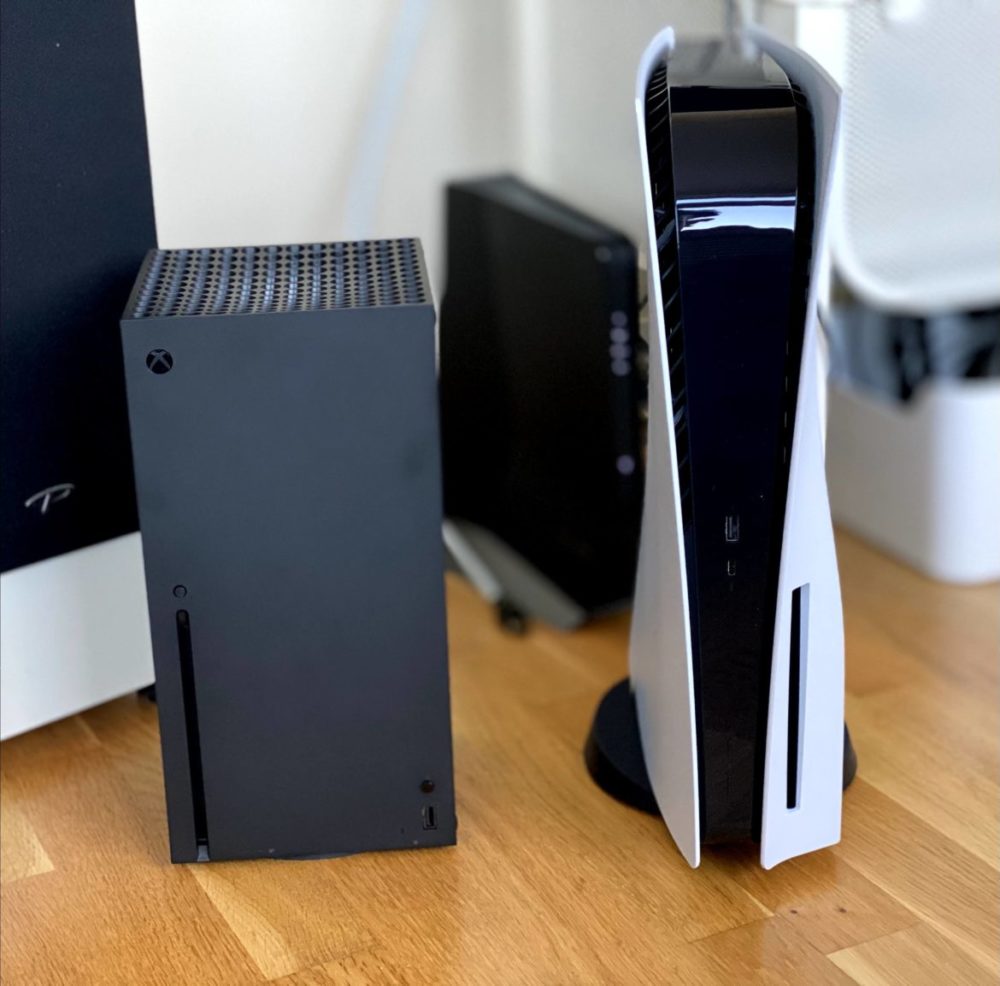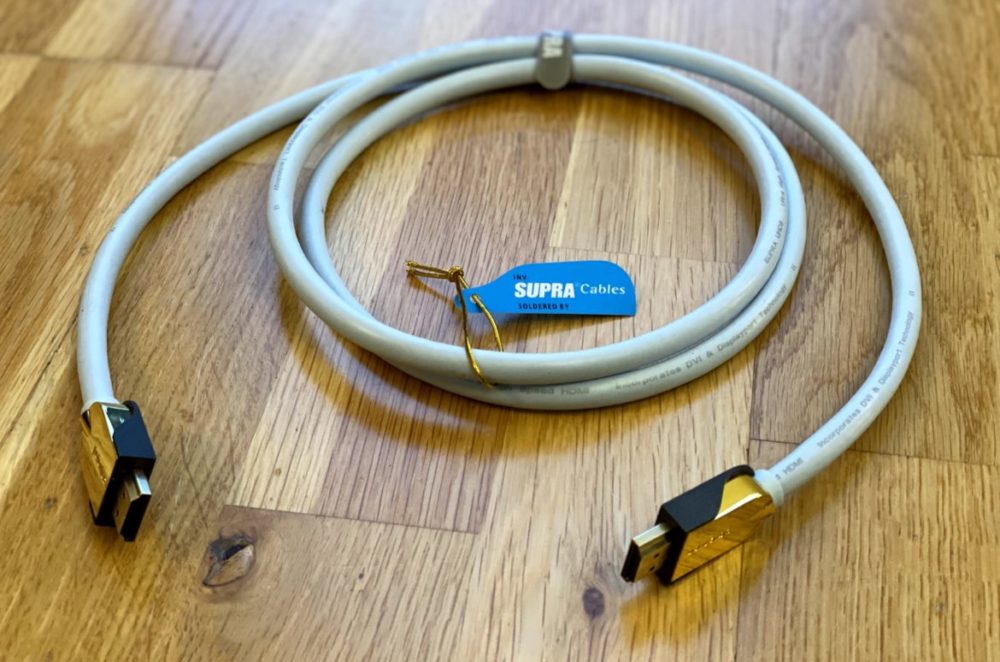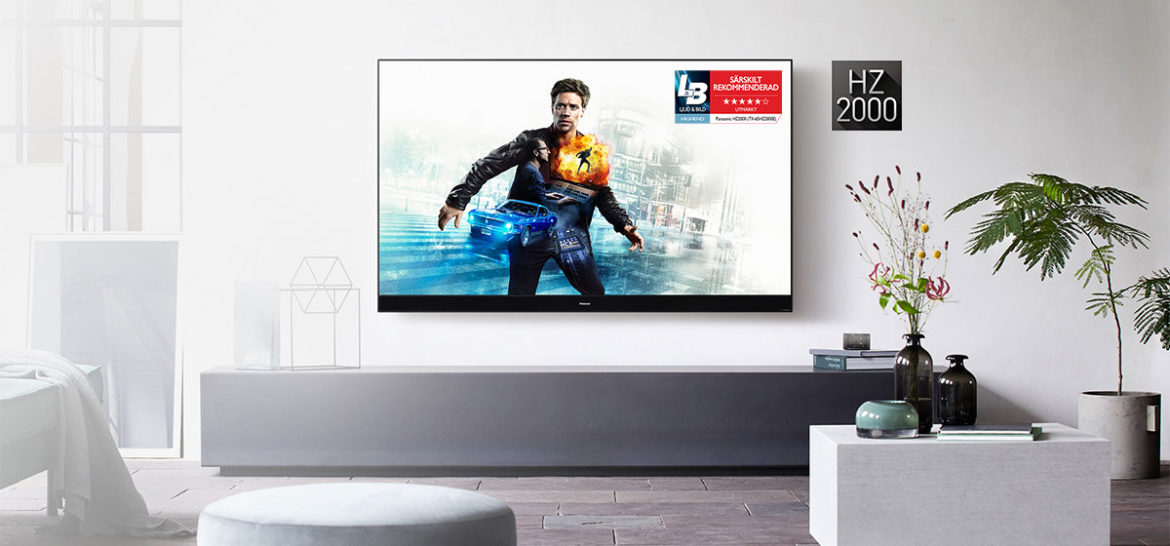TL;DR
Panasonic's TX-65HZ2000 reigns supreme in picture quality, building on its predecessor with unparalleled color, contrast, and near-perfect black transitions thanks to its custom, cooled OLED panel. It supports all major HDR formats, including the new Dolby IQ for adaptive brightness. While the integrated Dolby Atmos sound is a nice touch, the TV falters slightly with an incomplete HDMI 2.1 implementation, missing key features like VRR, a drawback for serious gamers. Its smart TV platform is also dated, necessitating external devices. Despite these points, for sheer visual excellence, especially for movies, the HZ2000 sets the benchmark. Discover if these refinements justify the premium price by reading the full review!
“It’s lonely at the top”, a slogan familiar to many, aptly describes the position of this year’s top OLED, the Panasonic TX-65HZ2000. Building upon the formidable legacy of last year’s top OLED, the TX-65GZ2000, this model manages to extract even more performance at the pinnacle of image quality, albeit with a minor caveat.
OLED Panel in Panasonic HZ2000
As in previous years, the Panasonic HZ2000 features a custom-built OLED panel (sourced from LG Displays) with professionally implemented, hand-mounted cooling. This configuration enables the highest brightness levels currently achievable on an OLED display, while also providing enhanced protection against burn-in. Similar to luxury automobiles from manufacturers like Rolls Royce and Ferrari, Panasonic’s flagship models are meticulously assembled by hand and produced in relatively limited quantities. While the investment is substantial, the resulting TV offers a unique and unparalleled viewing experience.
OLED or LED?
A frequent question from our readership concerns the optimal choice between OLED and LED technology. Generally, OLED panels are characterized by lower peak brightness compared to LED (or QLED) displays. However, OLEDs deliver superior contrast, black levels, and color fidelity. Panasonic’s professional-grade OLED panels, utilized for color grading in Hollywood and other demanding applications, achieve at least 200 nits (approximately 20% more) of brightness compared to other OLED panels available today. The HZ2000’s maximum brightness of approximately 1,000 nits should be regarded as a benchmark for brightness with detail preservation, and not simply a general measure of luminance. Some LED models boast specifications such as “3,000 nits,” which often translates to a washed-out image lacking discernible details. Therefore, overall brightness is not the sole determinant of picture quality. The panel’s dynamic range and its ability to accurately render specific, bright details without creating a homogenized, merged effect are crucial factors, often lacking in less expensive panels.

Concerning HDR, the HZ2000, like its predecessor the GZ2000, supports all current HDR formats: HDR10 (the baseline standard), HDR10+, Dolby Vision, and HLG (predominantly used for international television broadcasts). Last year saw the widespread adoption of Dolby Vision, which has emerged as the dominant dynamic HDR format and is now standard on the majority of new UHD 4K releases and streaming services like Netflix and Disney+. The HZ2000 introduces the new Dolby IQ mode and Filmmaker mode picture presets.
Dolby IQ dynamically adjusts the HDR presentation based on ambient lighting conditions, a practical feature for viewers in normally lit environments. It optimizes HDR levels by analyzing both Dolby Vision metadata (on a frame-by-frame basis) and the room’s lighting, preventing excessively dark images in bright rooms or overly bright HDR in darkened rooms. Some image settings within this mode are locked to minimum values (e.g., sharpness and IFC – Intelligent Frame Creation), which cannot be disabled. This limitation is somewhat perplexing from a purist image perspective. While the minimum IFC setting is generally acceptable, users sensitive to the “soap opera effect” may still perceive it even at this lowest level.
Filmmaker mode represents a long-standing industry initiative championed by Hollywood. It provides a completely unadulterated viewing experience, free from any digital “enhancements” (which often degrade image quality and detail). In essence, it mirrors a professionally calibrated mode with all superfluous processing disabled. This is the recommended mode for viewing movies and TV series. Here’s Tom Cruise and Mission: Impossible: Fallout writer/director Christopher McQuarrie to elaborate:
Panasonic HZ2000 – The picture – I feel the need … the need for speed
Straight out of the box, Filmmaker mode offers the most accurate image reproduction (minor gamma discrepancies may exist compared to professional calibration, but the cost and effort of calibration are likely prohibitive for most users). The Professional 1 or 2 modes also deliver excellent performance, closely approaching reference levels. However, the advanced image processing inherent in these modes results in relatively high input latency (around 120 ms), which is noticeable during gaming. Game mode reduces latency to 22 ms, the lowest achievable value, by disabling much of the image processing. This mode also alters color characteristics due to the Wide Color Gamut, resulting in a slightly pastel color palette. Furthermore, the image exhibits a somewhat cold (bluish) cast, which can be mitigated by selecting the Warm or, preferably, Warm 2 color temperature setting.
Panasonic excels in mitigating posterization, a common artifact that manifests as abrupt transitions between complete black and the faintest illumination of a pixel. Excessive step sizes create a grayscale-tinged image and, in severe cases, unsightly artifacts in dimly lit scenes. Near Black performance, the transition from complete darkness to minimal light, is handled exceptionally well by Panasonic, surpassing all other OLEDs currently available. As an example, consider the opening scene of The Revenant in UHD 4K, where Leonardo DiCaprio lies on the floor in darkness. The LG CX/C9 models render this scene either too dark (losing detail) or too bright, introducing grayscale artifacts. Sony’s A85, their flagship model for this year, also exhibits visibly coarser steps between shades, despite Sony’s slightly superior motion processing.
Initially, when viewing HDR content on the HZ2000, we perceived a slight reduction in “punch” compared to the GZ2000. However, the HZ2000 exhibits better control over HDR, resulting in greater detail preservation. This is evident in the opening sequence of The Kingsman: Secret Service in UHD 4K: the sunlit, snow-covered mountains are rendered with exceptional sharpness, devoid of the bleeding or rasterization observed previously. The HZ2000 prioritizes precision and detail over sheer impact.
Filmmakers, both professional and amateur, can confidently utilize this panel for color grading purposes (some Swedish film production companies employ Panasonic displays for this task). By disabling Tone mapping and selecting the target mastering nit level, users can fully leverage the display’s capabilities for creative workflows.
Built-in Dolby Atmos sound
Like the GZ2000, the HZ2000’s 35 kg weight is attributable to its integrated Dolby Atmos-compatible sound system speakers located on the rear (in addition to the electronics and advanced cooling system). Despite its compact form factor, the Dolby Atmos sound provides a convincing audio experience suitable for typical living room environments. The bass response is noticeable in content such as the latest Mad Max (with Dolby Atmos), though it may be somewhat less pronounced compared to dedicated home cinema solutions. However, bass can be augmented via an external subwoofer connected to the TV’s headphone jack (3.5mm connection). Ultimately, this system provides a compelling audio solution for users who prefer not to populate an entire room with separate speakers and cabling.
Regrettably, the HZ2000, Panasonic’s premier OLED panel for this year, is only available with the integrated sound system (similar to the GZ2000). This limitation is understandable, given the relatively small production volume of this model series.
HDMI 2.1 – does it matter?
Regarding this year’s shortcoming: The Panasonic HZ2000 officially supports HDMI 2.1, but, as with last year’s model, it only implements a subset of the standard’s features. ALLM (Auto Low-Latency Mode, which automatically switches to Game mode when the console sends the appropriate signal) and eArc (a feature with limited applicability for most users) are supported, functionalities already available in the HDMI 2.0b standard. However, key features such as VRR (Variable Refresh Rate) and 8K are absent. The lack of VRR is disappointing, as it would have positioned the HZ2000 as the undisputed leader in all categories, given that both the Playstation 5 and Xbox Series X support it (or will support it in future games). Furthermore, the LG CX/C9, popular choices among gamers, suffer from VRR-related issues that are unlikely to be resolved on existing 2020 OLED panels (without a hardware revision). It is plausible that Panasonic was aware of this gamma (brightness) problem with VRR and consciously omitted the feature, given the apparent impossibility of implementing it correctly this year. Therefore, the question remains: is VRR a critical feature to prioritize, considering the current scarcity of content and displays that implement it effectively?

120fps is another desirable feature for gamers, now supported by the latest consoles. The Panasonic HZ2000 supports a 120Hz refresh rate and can display 120fps content via BFI (black frame insertion, similar to the implementation on LG CX models). However, the next-generation consoles do not currently recognize this support, and the BFI effect – inserting black frames to simulate a higher refresh rate – resulted in both headaches and a reduction in brightness during our testing with 120fps content from a computer.

Finally, 8K resolution remains a “future promise,” realistically 3-5 years away from widespread adoption in films, TV series, and games. Aside from a limited number of online demos and individual YouTube videos, 8K in 2020 is primarily a marketing buzzword. We do not anticipate widespread 8K content availability for several years, making it a less significant consideration at this time (purchasing an 8K TV today may lead to obsolescence by the time 8K becomes standard). While some phones now offer “8K filming” capabilities, the aggressive compression employed significantly degrades detail, negating the benefits of the higher resolution. We project that 8K adoption will gain momentum around 2023.
Smart TV – with smart accessories
We believe that the integrated smart functionality of contemporary TVs offers limited advantages, given that devices like the Apple TV and the new Google Chromecast can transform any TV with an HDMI connection into a comprehensive smart platform for between 500-1000 SEK. Panasonic’s MyHomeScreen interface is a legacy system that has persisted for years (similar to the presence of only two HDMI ports on the rear panel). MyHomeScreen lacks support for the new 4K streaming standard (AV1) used by services like YouTube, lacks AirPlay compatibility, lacks casting functionality, and offers a limited selection of apps (SVT, Netflix, and a few others, but no Disney+, for example). To achieve true smart TV functionality, this TV virtually necessitates an external media box. We suggest that Panasonic license and integrate the new Chromecast platform to address these limitations. The marginal cost increase would be inconsequential to the end customer and would obviate the need for an external Chromecast or Apple TV. This lack of ambition is disappointing for a TV of this caliber.
Summary – Panasonic HZ2000
The Panasonic TX-65HZ2000 unequivocally delivers the market’s best picture quality for movies and TV series. Its exceptional color reproduction, contrast, and near-absence of posterization elevate it to a class of its own. The incomplete implementation of HDMI 2.1 is a notable drawback, given the advent of next-generation consoles. However, it’s important to acknowledge that there is currently no superior alternative in this regard, as all of this year’s OLED panels appear to exhibit VRR-related issues (furthermore, stable and fully developed software for the consoles and games is still a year or so away). A fully expanded, high-speed HDMI 2.1 implementation remains a top priority for Panasonic’s 2021 flagship model, along with an integrated Chromecast.
It is commendable that Panasonic’s engineers continue to refine and improve upon what is already the best-in-class, demonstrating a dedication to detail. The HZ2000 is the finest TV Panasonic has produced to date, a significant achievement considering their history. Owners of last year’s exceptional GZ2000 may not find the upgrades compelling enough to warrant an immediate upgrade, as the HZ2000 represents a refinement of an already outstanding product.
Since no TV currently offers a complete HDMI 2.1 implementation, the primary factor in this year’s OLED TV purchase decision should be image quality. And Panasonic firmly maintains its position at the top of the podium in this regard, despite being the most expensive TV in its category and size. Larger screen sizes, faster response times (for competitive gaming), and lower prices are available from other brands. However, for best picture, the conclusion is clear: The Panasonic TX-65HZ2000 is simply the world’s best TV right now.
Again.

